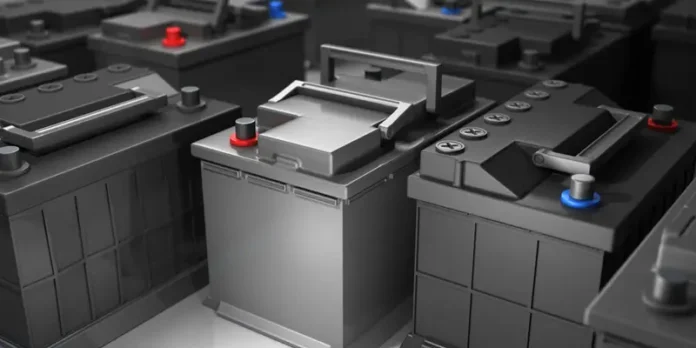Nothing works in modern motor vehicles without high-performance batteries. In addition to the right size and capacity, the battery type is the most important factor. First and foremost is the modern AGM battery, which is not only used in cars and motorcycles, but also in boats and other vehicles. But what is an AGM battery? What are the differences and advantages? And when is it worth switching to AGM batteries?
What is an AGM battery?
The battery secretly does its job in the car, without us worrying about its performance. A lot has happened in battery technology in the last few decades. One of the most modern developments is the AGM battery. The abbreviation AGM comes from English and stands for “Absorbent Glass Mat” and thus already describes the structural design of the battery.
The core component of the battery is a lead fleece. Put simply, with this battery design, a glass fiber mat is saturated with sulfuric acid. These extremely thin glass mats act like a sponge between the lead plates of the battery. At the same time, such batteries also hold more lead, which means more power. In practical use, this brings considerable advantages not only in passenger cars, but above all in two-wheelers and boats that are at risk of tipping over.
Already knew? – High-performance AGM batteries are not a new phenomenon. They were developed back in the 1970s. At that time, however, they were primarily used to store energy for the emergency power supply of IT rooms and telephone booths.
What is the lifespan of an AGM battery?
The service life of an AGM battery depends on the type and use. These are designed for either stationary or cyclic use with a specific lifespan in mind. The service life of a stationary battery is given in years. In the case of AGM batteries for cyclic use, on the other hand, the service life is given as cycles in relation to the depth of discharge.
A small AGM battery in stationary operation lasts a good 4 to 5 years. Special long life versions for up to 12 years. AGM batteries for cyclic use can easily withstand more than 600 cycles at at least 50 percent discharge before capacity drops below 80 percent.
These are the biggest advantages of the AGM battery
Unlike a classic wet battery, AGM batteries can use more lead because there is no need for an acid reserve. In addition, the battery type is characterized by three times the cycle stability compared to conventional batteries. This in turn gives the energy storage device a long service life and, even after many charging cycles, a high capacity well in excess of 80 percent.
Another decisive advantage is the combination of leakage security, vibration resistance and positional tolerance. After all, the battery fluid is bound in the glass fleece, so that the battery cannot leak uncontrollably if the housing breaks, even when the battery is at a sharp angle.
In addition, modern AGM batteries have been specially designed for vehicles with increased power requirements and a start-stop system. AGM batteries can also cope with short journeys and frequent engine starts without any problems, while conventional wet batteries tend to quickly become defective due to the cyclical load.
What is the difference to other battery types?
Due to the design, special valves protect the life of the battery.
AGM batteries have a higher capacity than conventional batteries.
Battery technology enables significantly more starts in vehicles (60,000 and more).
AGM batteries are maintenance-free, leak-proof and safe to handle.
Compared to conventional GEL battery, charging is quicker.
Where else are AGM batteries used?
The main area of application for the AGM battery is in vehicles. The energy storage devices are installed there both as a vehicle battery and as a separate start-stop battery. This applies to modern motor vehicles as well as mobile homes.
In addition, the batteries can often be found in off-grid energy supply systems in the field of wind and solar technology as well as in UPS and BSV systems. But the AGM battery also shows its strengths in fire alarm systems, stair lifts, emergency lighting systems, alarm systems, intruder alarm systems, fire alarm systems and telecommunications systems.
Changing to an AGM battery – Which battery do I need?
Even if technical standards often allow the installation of different batteries, there are a few things to consider when changing the battery. If your car, motorcycle or camper is already factory-fitted with an AGM battery, the new battery must also be an Absorbent Glass Mat battery.
And that in a housing with the appropriate design and in the same performance class. Otherwise, vehicle components or the battery may be damaged. Attention: Conventional wet batteries have no place in vehicles with a start-stop function. You can find out which type of battery you need and what performance data you need to look at from the information on the old battery.
Conversely, it is possible to convert vehicles without a standard AGM battery to such a battery. Once the new battery has been installed, you can also use the numerous advantages of AGM batteries in an old vehicle. However, it is important that the maximum charging voltage must not be exceeded under any circumstances. You can find out in your specialist car workshop whether the alternator in the vehicle is suitable for installing an AGM battery and whether the conversion is possible.
Of course, the battery with the most superior performance is definitely a lithium battery. Without considering the cost, the lithium battery is the most ideal battery. The solar power generator built with lithium batteries can be used as a backup power source for your home, and you will no longer worry about sudden power outages.
















